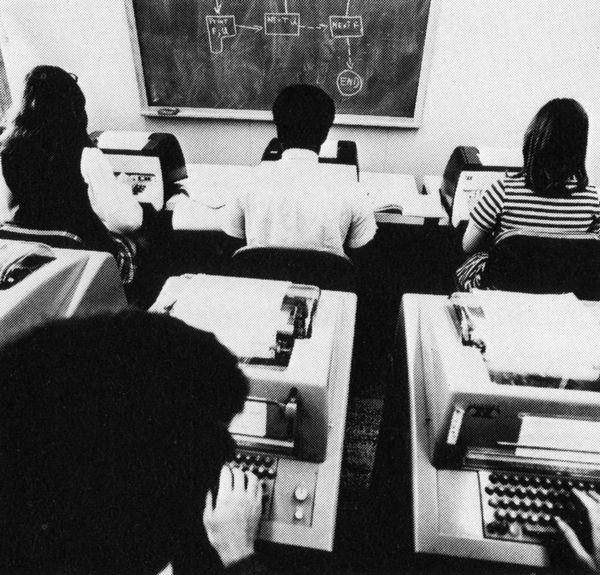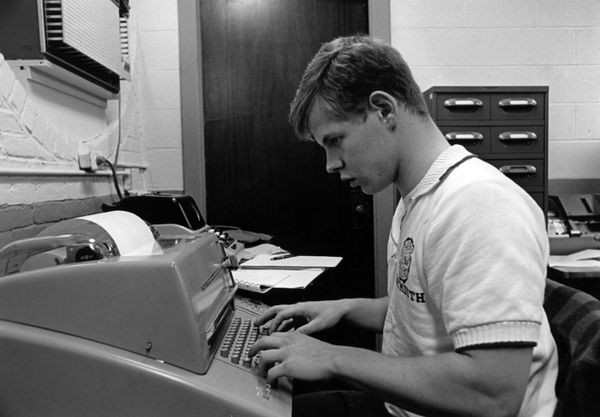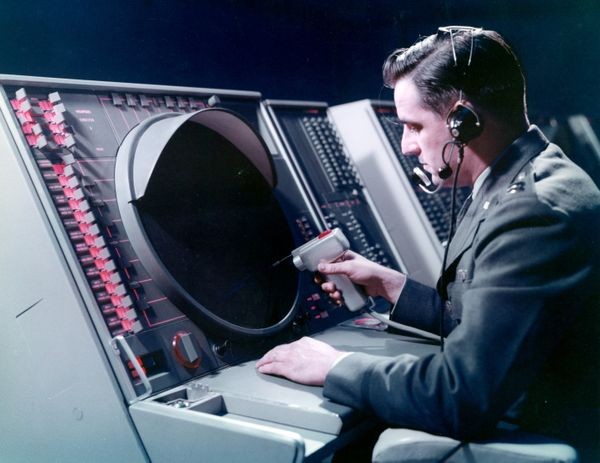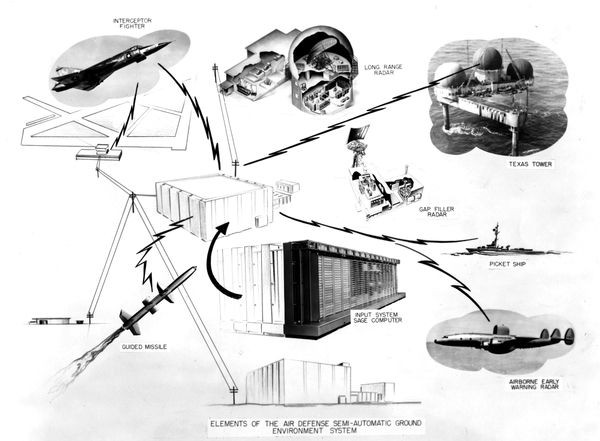Many People, One System
Timesharing in the classroom
As the first multiuser computers, timesharing systems became the birthplace of email, chat, discussion groups and collaboration software, which were all later adopted and enhanced for networked computers.
Many People, One System
By the late 1950s, many people could share a single computer, using terminals to log in over phone lines. These timesharing computers were like central hubs with spokes radiating to individual users.
Although the computers generally couldn’t communicate with each other, these were the first common multi-user systems. Timesharing pioneered many features of later networks, from file sharing to e-mail and chat.
Typical 1960s users were a mix of business people, banks, students and researchers, military personnel, and customers of specialized services such as the SABRE airline reservation system.
Dartmouth Time-sharing system teleprinter
Early computers used “batch processing” -- like a washing machine, you gave them a job and returned for results. Time-sharing popularized interactive computing with multiple users sharing the computer’s time simultaneously. Each user needed a terminal like this.
View Artifact DetailSAGE Air Defense System: Network Pioneer
Designed to detect enemy airplanes in the 1950s, SAGE pioneered many technologies—including special-purpose networking. The computers communicated with radar stations, counter-attack aircraft, and each other — all in real-time, as potentially threatening events were happening.
SAGE (Semi Automatic Ground Environment)
This nuclear attack warning system pioneered special-purpose networking, with 23 connected centers across the continent.
View Artifact Detail


